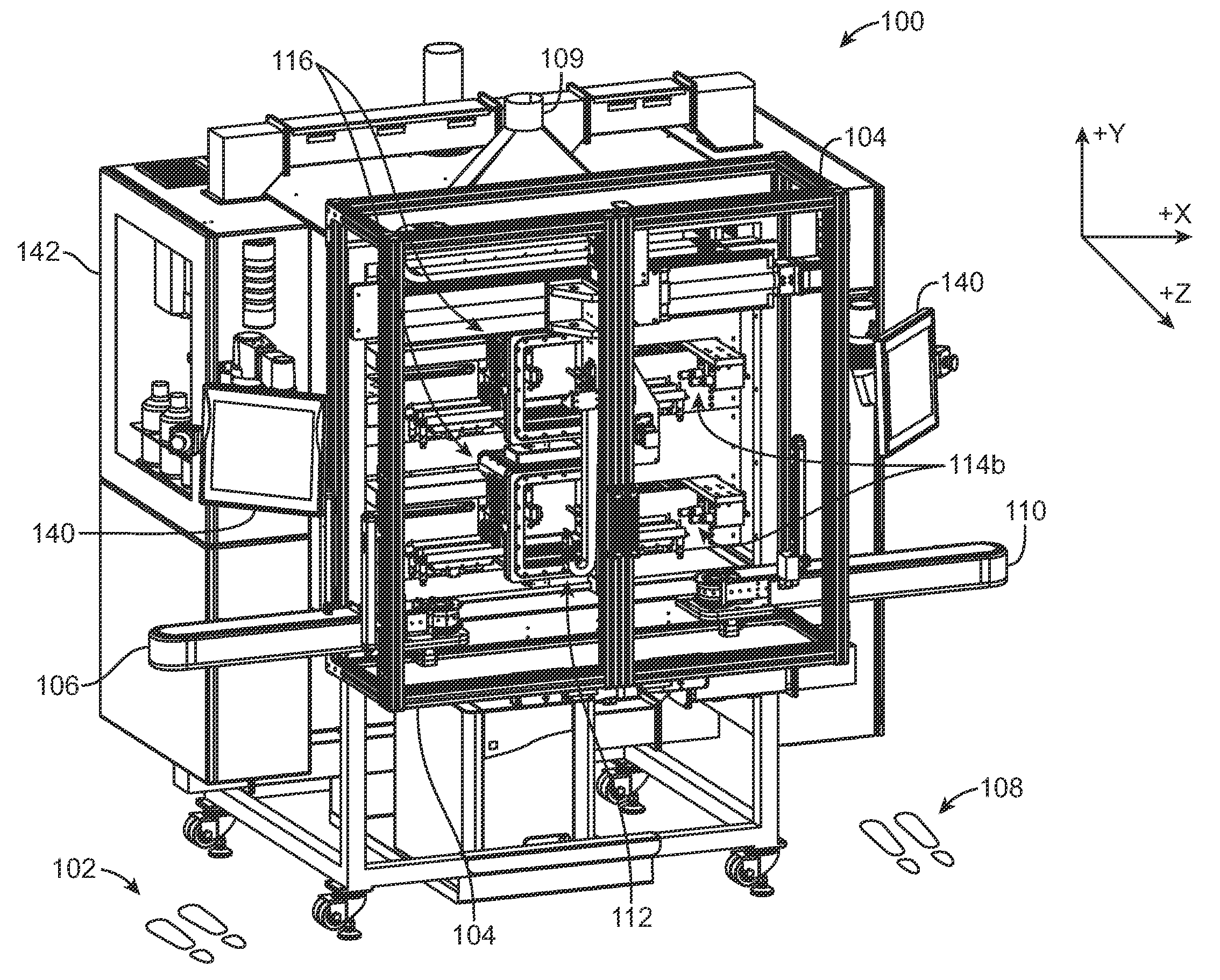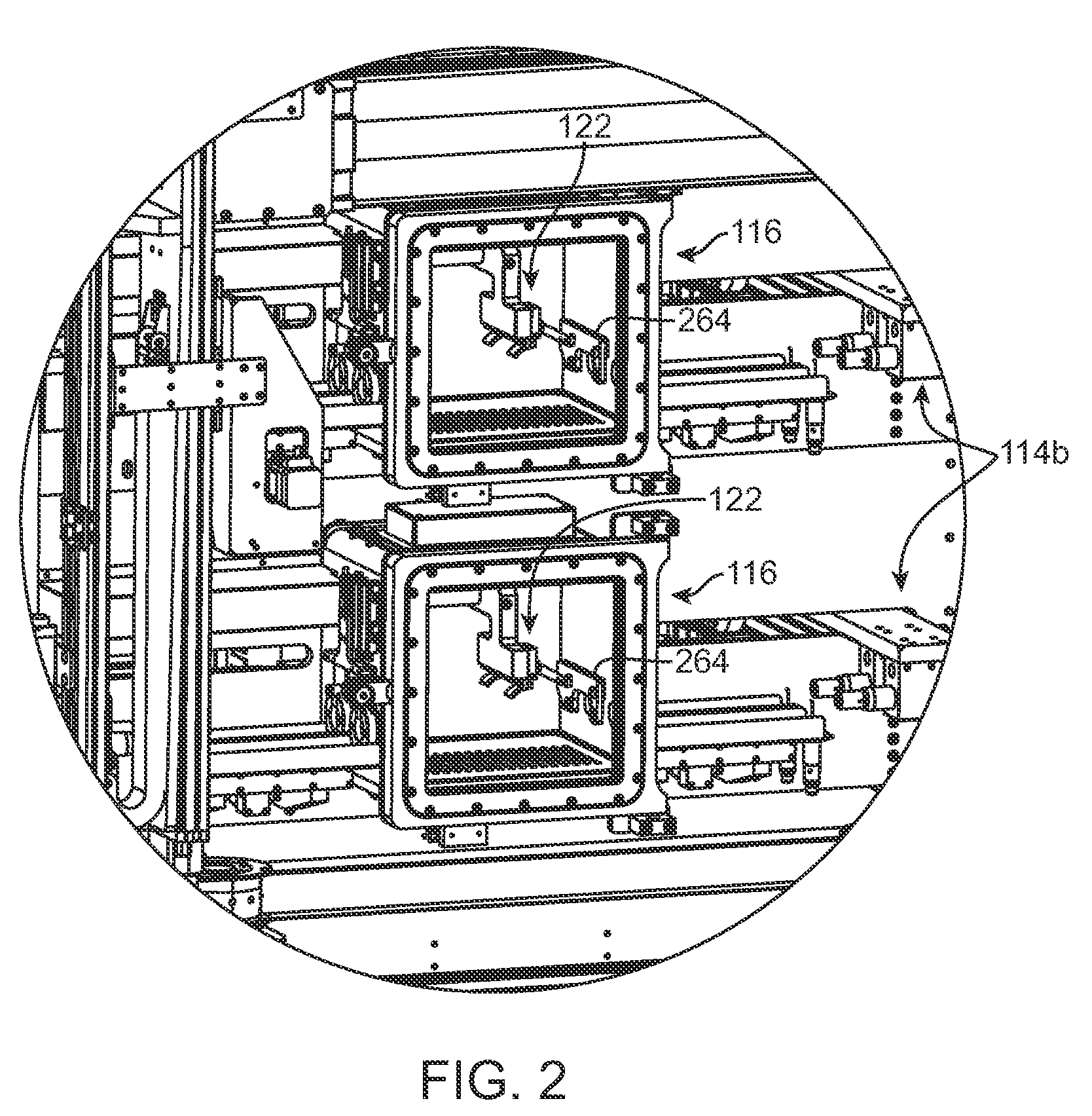System and Method for Coating a Medical Device
a technology for medical devices and coatings, applied in the field of coating a medical device, can solve the problems of pooling or webbing of the coating substance, difficult application of uniform coatings with good adhesion to the substrate, and inability to meet the requirements of small and intricate medical devices. uniform coating thickness and distribution
- Summary
- Abstract
- Description
- Claims
- Application Information
AI Technical Summary
Benefits of technology
Problems solved by technology
Method used
Image
Examples
Embodiment Construction
[0038]Referring now in more detail to the exemplary drawings for purposes of illustrating embodiments of the invention, wherein like reference numerals designate corresponding or like elements among the several views, there is shown in FIG. 1 a stent coating system 100 providing a controlled manufacturing environment for transporting, spraying, and drying of a medical device.
[0039]In use, a person stands at position 102 outside of a transparent shielded enclosure 104 and places stents to be coated on an inbound conveyor assembly 106. Another person stands at position 108 outside of the shielded enclosure 104 and removes coated stents from an outbound conveyor assembly 110. The stents are not handled directly. Each stent is individually carried on separate carrying devices, referred to herein as a “mandrel,” and may be moved independently of each other from point to point during the coating process via direct manipulation of the mandrel. The mandrel is configured to retain the stent ...
PUM
| Property | Measurement | Unit |
|---|---|---|
| size | aaaaa | aaaaa |
| angle | aaaaa | aaaaa |
| angle | aaaaa | aaaaa |
Abstract
Description
Claims
Application Information
 Login to View More
Login to View More - R&D
- Intellectual Property
- Life Sciences
- Materials
- Tech Scout
- Unparalleled Data Quality
- Higher Quality Content
- 60% Fewer Hallucinations
Browse by: Latest US Patents, China's latest patents, Technical Efficacy Thesaurus, Application Domain, Technology Topic, Popular Technical Reports.
© 2025 PatSnap. All rights reserved.Legal|Privacy policy|Modern Slavery Act Transparency Statement|Sitemap|About US| Contact US: help@patsnap.com



